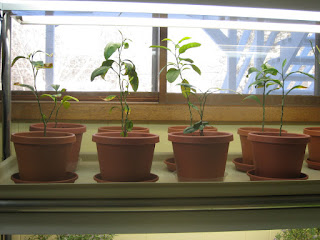Some seeds are notoriously difficult to germinate and require extra care. For example, basil and parsley require long germination times and warm root zones. I generally start to germinate them around Christmas for planting in the spring.
Today's project involves lavender, purple coneflower, and purple prairie clover---all attractive to native pollinators. These three seed varieties require a period of cold prior to germination. I could place them in the ground outside and wait for winter to do its work, but since these varieties are fussy, I decided to germinate them indoors. The seeds will "winter" in the refrigerator for a month or so. Then I'll place the soil-and-seed mixture into small pots where they will germinate under lights and be warmed by a seedling mat beneath their roots. Hopefully, all this tender loving care will produce a few viable plants.
What else is in my fridge? Mason bees. Yup. They live there all winter. But that's another blog post for another day. Cheers!





















